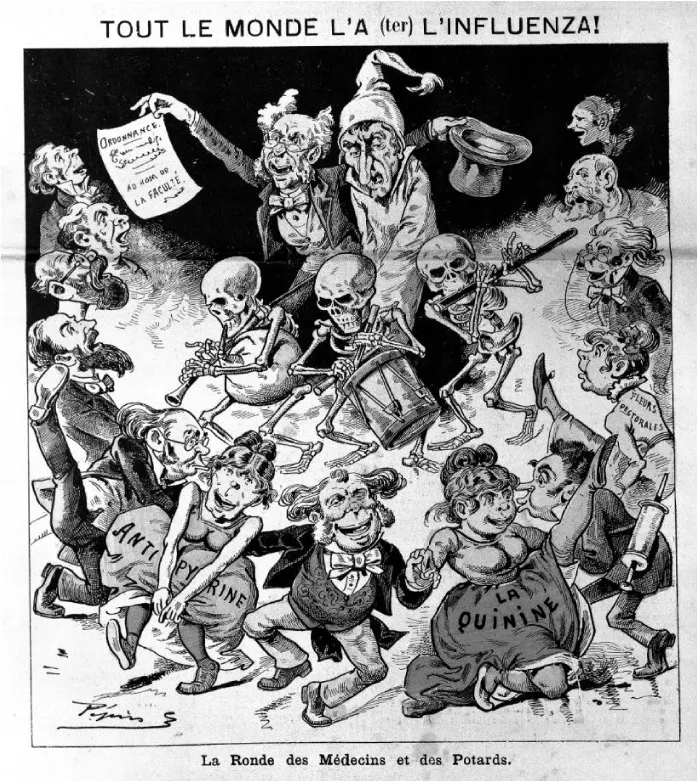Archives of Preventive Medicine
Brazil’s New Era of Epidemics1
Ian Read*2*
Cite this as
Read I (2020) Brazil’s New Era of Epidemics. Arch Prev Med 5(1): 067-069. DOI: 10.17352/apm.000023As 2020 nears an end, the Covid-19 pandemic has been deadlier in Brazil than in most other countries. The toll will likely cost 200,000 Brazilian lives before vaccines and other measures can turn the tide. The pandemic reveals a nation in the grip of a new era of epidemics. With anxious eyes we look ahead, but we should also look back.
Two periods, in the sixteenth and nineteenth centuries, were also characterized by unfamiliar and terrifying plagues. They left a deep and lasting mark on Brazil. A brief history of these phases might provide a better guess as to the kind of world that will greet us tomorrow.
The current and third period of infectious diseases, including HIV/AIDS, Zika, yellow fever, dengue fever, and the coronavirus, can be blamed on greater and faster movements of people who bring germs with them. Non-human factors like genetic mutation and climate fluctuations always have an impact but within social contexts. Indeed, the great stages of human migration and globalization were marked by epidemics.
When the first Europeans and enslaved Africans crossed the Atlantic Ocean in the late fifteenth and sixteenth centuries, they unknowingly carried with them a set of destructive diseases that depopulated the Americas. The specific diseases that killed millions of indigenous peoples are uncertain; most likely, they are smallpox, measles, and influenza. Explorers and conquistadors, most of whom had acquired immunological resistance when exposed as children in Europe or Africa, took advantage of the devastation to win wars, enslave, occupy, and settle. The mass casualties brought by plagues of the sixteenth century in Brazil were mostly unseen and unrecorded, occurring far from the coasts.
To understand what shape Brazil might have taken had the first period of epidemics not occurred, we must compare the Portuguese colonization efforts in India and Africa, where dense settlements of immunologically resistant native peoples kept Portuguese to coastal fortresses. Furthermore, Brazil owes its Afro-Brazilian heritage in part to disease because slaves were imported from Africa in response to a perception that the declining native populations could not meet an acute “need” for laborers.
The Portuguese occasionally witnessed the epidemics that cut through indigenous communities in the 1500s. Despite this, naturalists characterized Brazil as perpetually verdant, fertile, and extraordinarily healthy from its beginning. As early as 1576, the Portuguese chronicler Pero de Magalhães Gândavo wrote Brazil’s air was “so pure and well-tempered” that it “restores and prolongs human life3.” After the Dutch seized most of the northeastern Brazilian coast in the 1630s, they helped perpetuate the claim of salubrity. The bubonic plague ravaged the Dutch Republic when Johan Maurits and his entourage of naturalists and artists escaped to Brazil’s earthly paradise.
Throughout the colonial period, even the fiercest critics of the Americas usually viewed Brazil as an exception to the “torrid zone.” Cornelius de Pauw and William Robertson popularly argued that the animals and peoples of the New World were naturally degenerate. They also wrote that Atlantic winds “refreshed” or cleansed Brazil. Even in the first quarter-century after independence, Brazilian and European observers agreed that the country had escaped the epidemics that overran other parts of America and Europe, including yellow fever, cholera, and influenza. Charles Darwin echoed a common opinion, writing in 1839 during a stop in Peru that “[disease-causing] miasma is not always produced by a luxuriant vegetation with an ardent climate: for many parts of Brazil, even where there are marshes and a rank vegetation, are much more healthy than this sterile coast.”
Brazil’s three-century-old reputation of exceptionally good health was abruptly ruined when a new wave of epidemics struck in 1849, again transforming Brazil. That year, thousands of people traveled to prospect for gold in California, and most had layovers in Rio de Janeiro. With more and faster ships crisscrossing the Atlantic, three new diseases, all utterly unfamiliar and terrifying, were carried across the sea in microbes colonizing vessels of potable water, nestling within human bodies, and reproducing within blood and saliva of various ectoparasites. Yellow fever’s urban mosquito vector, the Aedes aegypti, landed first and caused widespread disease, especially among previously unexposed Europeans. It transformed Brazilian ports and expansive coastal lowlands into frightening places for immigrants, sailors, merchants, and investors. Cholera (1854-1868) took hundreds of thousands of victims among sugar and agricultural workers, most enslaved and poor people of color. In some provinces, the slave population fell by more than a third in a few years. Smallpox was old and familiar, having become entrenched on the coast after 1850. Smallpox worsened even as vaccination began controlling it in large parts of Europe and North America. Influenza pandemics leaped across the North Atlantic in the nineteenth century, but Brazilians seemed to escape until 1890. That year, Brazilians suffered from the flu along with much of the rest of the world. Finally, the urban poor of its large northeastern cities were most at risk to be bitten by rats infected by bubonic plague (1899-1940s), also an unwelcome newcomer to the nation.
When rats carrying the plague bacteria began to scurry among the docks and alleyways of the frenetic port of Santos in 1899, Brazilians saw their country slipping backward. Rui Barbosa, one of the founders of the Republican regime and coauthor of the Brazilian Constitution of 1891, wrote the “destruction caused by plagues, defamation by our climate, disastrous reputation of poor health, and incalculable influence exerted by this phantasm for the settlement of this territory, has marked it to the foreigner as the habitat of death4.”
The consequences of Brazil’s second period of epidemics went beyond immigration. Besides a tragic and often preventable loss of life, the nation’s plagues in the middle and late nineteenth century caused positive and negative changes. They damaged slavery, destabilized economies and governments under late Imperial and early Republican regimes, created a more secularized and medicalized society, and shaped Brazil’s demographic profile for generations to come.
Pathologies were ecological and social. Diseases altered Brazilian self-awareness and national sentiment, transforming a young nation thought for centuries to be a blessed Eden of robust peoples into a dangerous, degenerate and dark place not distinct from the rest of the “torrid zone.” The country’s extreme regional inequality, lower number of immigrant workers (compared to its largest neighbors), and highly urbanized population are in no small part due to microbes and the ways that Brazilians, foreign merchants, and prospective immigrants coped with what scientist now view as interspecies cycles of pathogenicity and propagation.
The second period of epidemics ended around 1910 when a more activist and centralized state brought improvement to health, at least among elite and middling groups of its largest cities and wealthiest states. Few claimed Brazil to be “healthy”; Miguel Pereira famously called his homeland an “immense hospital” in 1916. Pandemic influenza arrived in 1918 but killed far fewer proportionally than in Europe and North America. By the 1920s, Brazilian microbe-hunters were celebrated internationally for their discoveries. One decade later, we can find a renewed confidence in the robustness of the “lusotropical,” or mixed-race Brazilian body, as touted by anthropologists like Gilberto Freyre. As Freyre recognized, climate and race have long helped explain human potential.
Brazil’s third and current era of epidemics began in 1990 when deaths from AIDS exceeded 10,000. Fortunately, the Brazilian National AIDS Program provided a model to the world in prevention, care, and treatment. As AIDS cases peaked in 1998, deaths from dengue fever began to rise. Dengue, along with several other dangerous diseases, does not transmit through sex or sharing needles, but by the Aedes aegypti. This mosquito that made its way back to Brazil in the twentieth century and reclaimed its home in Brazil’s cities. Between 1986 and 2019, more than 6,000 people died from dengue in Brazil. Cases rose sharply again in 2019. The same mosquito transmits the Zika virus, noticed by doctors for the first time in Natal in 2014. Most cases of Zika have no or mild symptoms, but women who are infected early in their pregnancy are 17 times more likely to experience congenital malformations that cause mild to severe disabilities in their children. The Zika outbreak from 2016-2017 left more than 14,000 suspected cases of microcephaly and hundreds of other individuals in pain and paralysis. Finally, the Aedes aegypti mosquito, with its cousin the albopictus, have brought an old and fearsome killer back to Brazil. Yellow fever resulted in more than 2,000 confirmed cases and 745 deaths in 2016 and 2017. This massively high mortality rate resulted in a near panic, and the government responded aggressively by vaccinating millions. Cases have subsided, but the threat remains.
Through environmental degradation, poaching and wildlife trades, and hyper-globalization, fertile and fallow epidemiological periods are no longer constrained to nations or regions. Ebola, SARS, MERS, and COVID-19 have “spilled over” from animals to humans and threatened global populations. Insect vectors have invaded, brought in part by climate change. What may stop the rise of infectious disease and the death they bring, we beg to know? A global phenomenon requires a global response. Currently, the World Health Organization can issue recommendations, supply guidance, and provide resources, but it can hardly compel national governments. Exchanging a small degree of sovereignty for greater national security may seem like a rational choice when threatened by diseases deadlier than COVID-19.
In such a transition, Brazil must again lead by example. After all, its municipal and state governments pushed the dangerous Aedis aegypti mosquito out of its cities more than 100 years ago. More recently, Brazil’s integrated approach to AIDS demonstrated how a country with fewer resources and higher levels of social inequality could beat a pandemic.
If we re-embrace the liberal ideals of open borders, cheap travel, and on-demand global supply chains, societies will need to make tough choices. We may commit to global and health regimes with international enforcement, increasing resources to national and international public health organizations, and expanding bio-surveillance with the sober recognition that every citizen or visitor is a potentially infectious body. This era of epidemics, like the previous one, must somehow balance security with liberty.
Relevant and copyright free images
The January 12, 1890, edition of the Paris satirical magazine Le Grelot depicted an unfortunate influenza sufferer bowled along by a parade of doctors, druggists, skeleton musicians and dancing girls representing quinine and antipyrine.
----------
1A version of this article was published in Portuguese by A Folha (São Paulo) on March 28, 2020.
2Associate Professor of Latin American Studies; Co-Director of the Center for Race, Ethnicity, and Human Rights; Soka University of America, 1 University Drive, Aliso Viejo, California, 92656; 949-480-4217.
3For original quote: https://archive.org/details/historiesofbrazi02ganduoft/page/26/mode/2up/search/climate (pg. 206) Portuguese: http://www.educadores.diaadia.pr.gov.br/arquivos/File/2010/literatura/obras_completas_literatura_brasileira_e_portuguesa/PEROMGANDAVO/SANTACRUZ/SANTACRUZ.PDF (pg. 6).
4“Pouco ou nada haveria que lançar, a este respeito, nos Estados Unidos, á conta de uma verba, cuja enormidade, entre nós, sobrepuja á das assolações directa produzidos pelo falagello; a diffamação do nosso clima, a reputação destrosa de insalubridade, a influencia incalculavel exercida por esse phantsma sobre o povoamento do nosso territorio, assignalado ao estrangeiro como o habitat da morte.” A Imprensa, Feb 6, 1899.
Article Alerts
Subscribe to our articles alerts and stay tuned.
 This work is licensed under a Creative Commons Attribution 4.0 International License.
This work is licensed under a Creative Commons Attribution 4.0 International License.



 Save to Mendeley
Save to Mendeley
